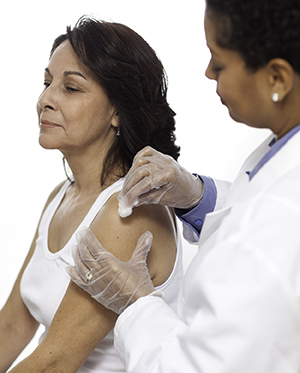Understanding Filgrastim
Your healthcare provider has prescribed the medicine filgrastim. This medicine is a manmade version of a protein called granulocyte colony-stimulating factor (G-CSF). Your body makes G-CSF to tell the bone marrow to make more white blood cells.
Filgrastim is not a cancer treatment. It's a supportive therapy. This G-CSF is a type of myeloid growth factor, used to raise the number of neutrophils in your blood. A neutrophil is a type of infection-fighting white blood cell. You're getting this medicine because your last chemotherapy (chemo) treatment caused your neutrophil count (ANC, or absolute neutrophil count) to drop. In some cases, radiation therapy to specific bones can also cause the neutrophil count to drop. Filgrastim may also be used before stem cell transplants to help stimulate the bone marrow to produce more normal stem cells to be collected prior to high-dose chemotherapy. Your ANC is measured with blood tests.
Filgrastim costs a lot of money. Talk with your healthcare provider to find out if your insurance will pay for it and how much you'll have to pay. There are many different brands of filgrastim. You may have to get the brand your insurance covers.
Filgrastim is given as a shot (subcutaneous injection) or sometimes as an IV infusion. It is given in a healthcare provider's office, clinic, infusion suite, or at home, depending on your insurance coverage. Your healthcare provider or pharmacist can give you more information about it.
This sheet will also help you learn more about filgrastim.

What filgrastim can do for you
This medicine can:
-
Make you less likely to get an infection
-
Make it safer for you to be around other people, and as a result, you can do more
-
Help prevent illness that could cause a delay or change in your treatment
How it works
Certain kinds of chemo reduce the number of neutrophils in your blood. As the number of these cells goes down, you are less able to fight infection. Filgrastim helps your bone marrow make these blood cells and push them out into your blood faster.
About 24 hours after chemo, you'll get your first filgrastim shot. You'll get a shot every day until your blood counts reach a certain level. Talk with your healthcare provider about this level and how long you may need to get filgrastim.
Coping with side effects
The most common side effects are:
-
Bone, joint, and muscle pain
-
Mild fever
-
Redness, swelling, or itching where the shot is given
These symptoms can often be eased with a heating pad and certain medicines. Check with your healthcare provider before you take any medicine for filgrastim side effects.
Other rare side effects include:
Tell your healthcare provider about any changes you notice. They can tell you what to do to manage or even prevent treatment side effects.
When should I call my healthcare provider?
Call your healthcare provider right away if any of these occur:
-
Possible signs of infection, such as:
-
Pain in your left upper stomach or left shoulder area (This could be a sign of an enlarged spleen, a rare side effect of this treatment.)
-
Easy bruising and bleeding
-
Shortness of breath, wheezing, dizziness, swelling around the mouth or eyes, quick pulse, or sweating
-
Redness, swelling, or itching at the site of the shot
Talk with your healthcare providers about what symptoms to watch for and when to call them. Know what number to call with questions or problems. Is there a different number to call when the clinic is closed on evenings, weekends, and holidays?